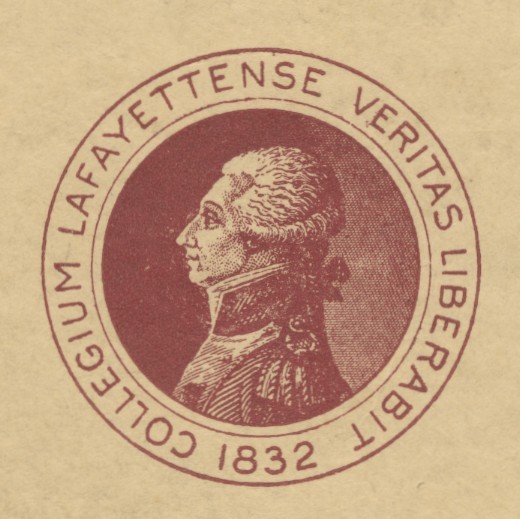Experience in Special Collections
As a history and government and law double major, I have always been interested in looking at old artifacts, photographs, and pictures and researching to discover something new about a subject. This semester in the archives I worked on two main projects: one revolving around the Marquis de Lafayette, the other around the Civil War. Both projects exposed me to areas about which I knew little. My first project was an exhibit for the Foreign Language Lab on the fourth floor of Pardee Hall. Though at first it seemed like an insurmountable task, taking each step one day at a time made the project manageable. Looking through some books in our collection, I researched the Marquis de Lafayette’s role in human rights throughout the time period between the end of the American Revolution and the beginning of the French Revolution. Although most people (including myself) do not conflate human rights and Lafayette, the French general was actually quite active in befriending and fighting for the rights of those who needed an advocate during this time: Native Americans, slaves, and French Protestants. Lafayette used various methods to help their causes including joining societies, working in government, forming alliances, purchasing a plantation for gradual emancipation, and adopting several young men, including two Native Americans, to educate them in France. All of this information was condensed into five panels designed on Adobe Illustrator for display in the language lab. Most pictures I used to supplement the text were found in the library’s collection.
Next, I moved on to researching Lafayette College during the Civil War era. After researching the college, the students, and the faculty during this time, I put together separate texts and found images to go along with the text. The panels were entitled “War Comes to Lafayette,” “‘These Died for the Union,’” and “The Junkin Family: A House Divided.” This information will be displayed as part of a Civil War exhibit at the Sigal Museum in downtown Easton starting at the beginning of the summer.
Additionally, I did some archival cataloging projects including reading through the travel journal of John M. Currie, Lafayette College chaplain between 1952 and 1964, on his yearlong journey working at the American University of Cairo in Egypt in 1922-3. I created scope and content notes and a typed version of the text (since Currie’s cursive was quite hard to decipher). Also, I read through the mostly religiously-based compositions of student Ephraim Simanton, valedictorian of the class of 1849, and created scope and content notes as well as an inventory for the collection.

Leave a Reply